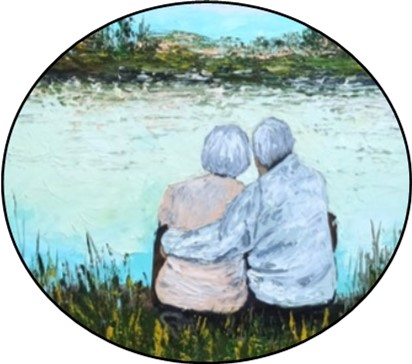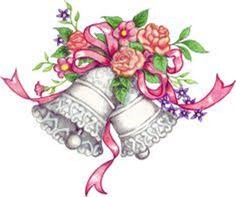
Sacrament of Marriage at St. Elizabeth Seton
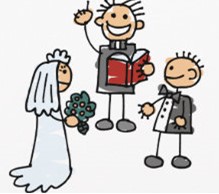
In the Catholic tradition, a wedding is first and foremost a liturgy of the Church. That means that the focus remains on God. You may have heard the celebration referred to as the 'bride's day' or other such titles. These are all contrary to a Catholic understanding of the event. In fact, we still celebrate the love of God, the lens through which we see that love is the gift of the sacrament of Marriage. It is true to say that choosing a Catholic wedding can invite you, and sometimes even your parents and grandparents, to stretch you ideas about the way you 'always imagined' your wedding, including the music you have dreamed of walking down the aisle. This has implications on how a Catholic wedding unfolds. Let's begin by outlining the vision of the Church for the celebration itself.
Two Baptized Catholics
When the bride and groom are both baptized, then the celebration of Mass is permitted. The marriage may be celebrated in the context of a Eucharistic celebration. For various reasons, the bride and groom may choose not to celebrate with a Mass. It is then celebrated in a Liturgy of the Word.
A Baptized Catholic & a Baptized Christian
When a Catholic is marrying someone of a different denomination, this is called a Mixed Marriage. Generally the wedding is celebrated with a Liturgy of the Word with Mass or provision for the Eucharist. This is not any form of penalty or disrespect. In fact, it is quite the opposite. It is a means of allowing the essence of the uniting of two people and two families to unfold without distinction or division. Catholics have what is termed a 'closed altar' meaning that only Catholics may come to the Table to receive the Eucharist. Since a marriage is a sacrament of unity, we want everyting about this liturgy to reinforce the unity. Having only the catholic bride or groom partake in the Eucharsit undermines the nature of the unity that is being celebrated. Out of respect for the non-catholics, we celebrate only those aspects in which all people present can participate.
A Baptized Catholic & an Unbaptized Person
This scenario is also referred to as a mixed marriage. Again, the marriage ceremony unfolds in the context of a Liturgy of the Word. A Mass is not an option for the same reasons as the mixed marriage of a Catholic and other denomination Christian.
Will you marry Me?! 
Often times when a young couple approach the Church, they will call the priest and asks if he will marry them. The pat answer is 'NO!' The priest does not marry the young couple, he merely witnesses the two of them exchanging their vows on behalf of the Church, and on behalf of the Government of Ontario. The actual ministers of the sacrament are the young couple themselves. In the same way that the priest is the minister of the sacrament of the Eucharsit, the bride and groom are the ministers of the sacrament of marriage.
To that end, the vision of the wedding is that the bride and the groom act as the ministers of hospitality, greeting the guests as they arrive. This is a hard sell because it is so out of the realm of our experience, but the two dozen couples who have opted to participate in this absolutely loved it. It has two important functions. First, it helps eliminate the pre-wedding jitters. All that nervous energy dissipates and the bride and groom can enjoy the celebration much more. The second benefit is that it changes the guests from spectators who have come to watch the event, to participates who also enter into the celebration with more awareness. The fear of the bride, and it is mostly the bride, is that the groom will see her in all her wedding regalia before the celebration. That is an old susperstition for which the Church has no time nor accomodation. The fear was rooted in the possibility that if the groom saw her before the vows were pronounced, he might change his mind. I hope that is still not a fear of the brides.
Once the guests have arrived, then the wedding party assembles at the entrance of the Church. In the mind of the Church, the wedding party is made up of the bride and groom, best man and made of honour. All the ushers and maids are not officially part of the wedding party. they have no real role in the liturgy other than to accentuate the entrance procession. The parents of the bride and the parents of the groom can be included as part of the 'official' wedding party.
The Entrance Procession
"The Entrance Procession is a highly symbolic ritual that has the power to communicate truth about what the Church believes regarding Marriage as the couple comes before the Lord to seek the blessing of his grace. It also has the power to draw the liturgical assembly into an act of worship rather than merely to set the stage for the assembly to act as spectators." from 'The Order of Celebrating Matrimony, Liturgy Planning Guide', from the Canadian Conference of Catholic Bishops
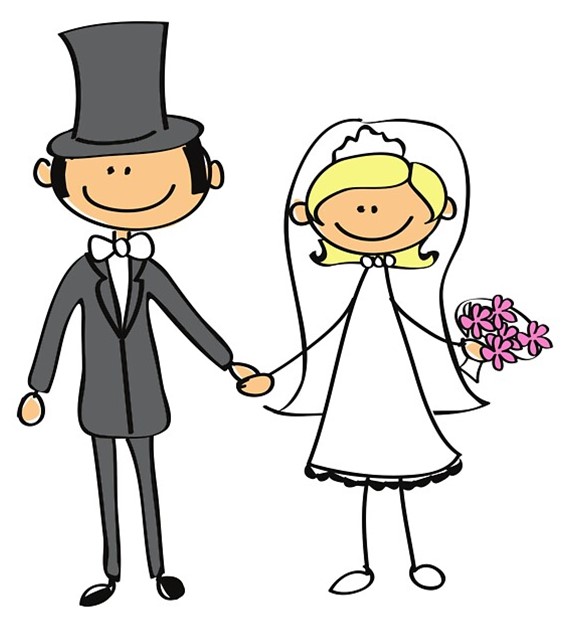
There are two options for the procession of the bride and groom. This can be quite jarring to people's expectations. The notion of daddy walking the bride down the aisle is not an option in the Catholic ritual. The Church offers two options for the wedding procession. the first has the bride and groom together at the entrance of the Church aloong with the wedding party. The priest arrives and officially greets the bride and groom reminding them that 'today, in this Church, you are the presence of Christ in our midst'. After the prayer of greeting, the procession enters the Church following the priest with the bride and groom coming in together at the end of the line. Provision has been made for the parents to be part of this entrance. The second option is to have the priest greet the bride and groom following their entrance to the place at the front of the Church where the rite will take place. Again, the bride and groom process in together. Upon arrival at the front, the priest then offers the greeting of the couple.
These are the only two options for the entrance. Here at St. Elizabeth Seton, since the parents are permitted to be part of the entrance procession, we allw a certain adaptation. Both parents may escort their child into the Church. It seems fitting that since mom and dad brought you into the Church for baptism, and first communion, and confirmation, that their important role in the sacramental life of the bride and groom should extend to the sacrament of matrimony. Both parents may escort both children in the procession, but it is an all or nothing option. If one parent wants to opt out of processing in, then the procession reverts to the original scheme of the Church, the bride and groom process in together without any parents.
The Consent
As we stated earlier, the bride and the groom are the ministers of the sacarment of marriage. It is their mutual consent in the presence of the best man, maid of honour, and priest (or deacon, or designated lay-person) that brings about the sacrament. The priest, best man and maid of honour witness the proclamation of these words. Before that is to happen, the priest asks the bride and groom if they really want to enter into this bond. The priest must be convinced that the couple is mature enough to understand what they are undertaking; that they truly are willing, ready, and able to enter into this bond; and that they will accept children lovingly from God. Once the priest is satisfied, the couple exchange their consent, or vows. The vows are prescribed and so the bride and groom do not create their own vows. If they are interested in creating vows, this is a lovely addition to the reception rituals and that is where it should find a place,
The Exchange of Rings 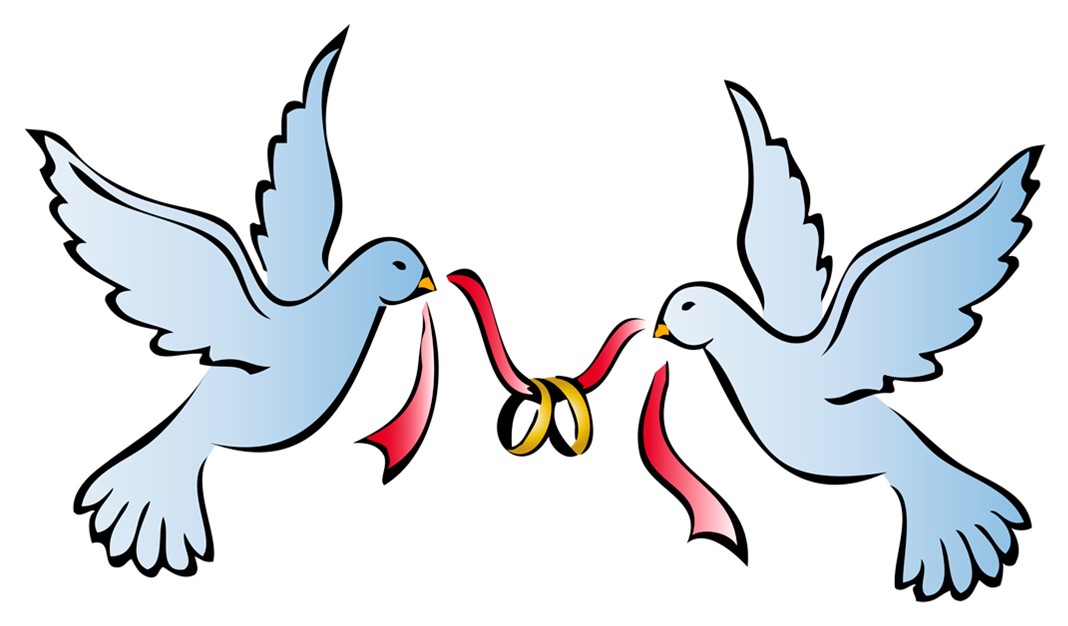
The exchange of rings is the primay symbol of the uniting of the two who have now become one. In a sense, this ritual action seals the deal.
Signing of the Register
As an official witness, the priest wears two hats. With the one hat, the priest acts as an official witness on behlaf of the Church. With the seond hat, he acts on behalf of the Province of Ontario. In days gone by, the signing of the license and register is purely a civic affair. As such, in many places the bride and groom were escorted out of the main body of the Church into the sacristy or parish Office to attend to this secular function, to distinguish it entirely as a government exercise. Then the bride and groom were ushered back into the Church and announced as husband and wife. Well, the signing of the documents remain a secular activity, but they are usually done in the Church but off to the side away from the altar.
